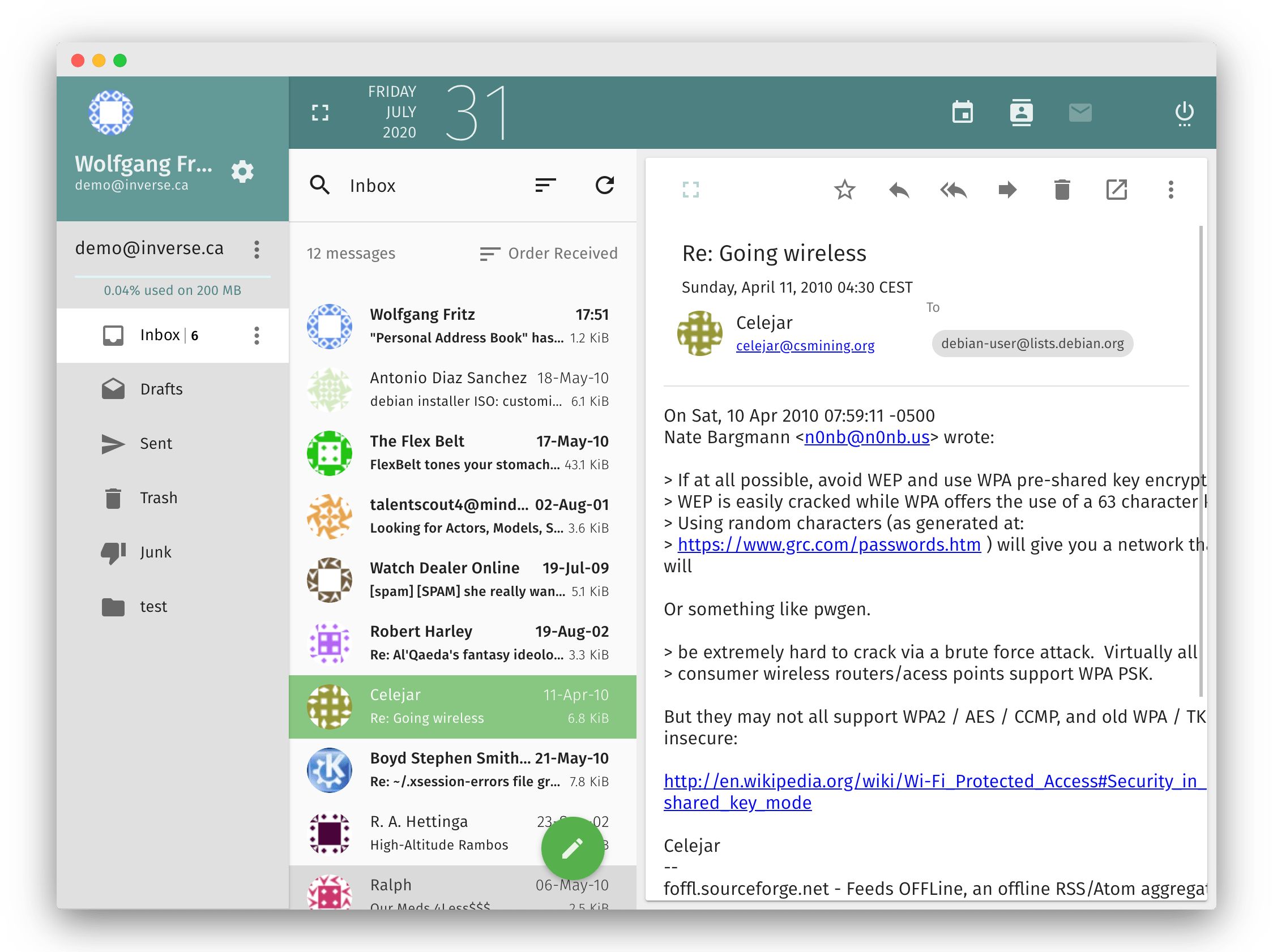SOGo Open Source Webmail
The SoGo open source webmail: Unleashing business efficiency with a secure, open source email solution.

SOGo Open Source Webmail
Universal, responsive and rich AJAX-based interface
SOGo offers professional integration for businesses and communities.
With its rich AJAX-based web interface, it supports all clients using standard protocols such as CalDAV, CardDAV and GroupDAV, as well as Microsoft Outlook with efficient ActiveSync integration.
It is therefore a fully supported and reliable groupware server with an emphasis on scalability and open standards.
SOGo is the front end component of your infrastructure, it sits in the middle of your servers to provide your users with a uniform and complete interface to access their information. It has been deployed in production environments where thousands of users are involved.
SOGo is released under the GNU GPL/LGPL v2 and above.

SOGo & Alinto
Next steps for SOGo?
Initially developed by The Skyrix Web Groupware (~1998-2004). It was then taken over by Inverse Inc. who continues to maintain and improve SOGo, while adding a set of features and has launched SOGo V5.
In 2022, Inverse and Alinto decided that starting in September 2022, Alinto will continue to support the open-source project and will offer a professional Cloud version under the Sogomail brand.
The rich community of users and suppliers who have chosen SOGo is thus assured that the success will continue for many years to come.
For the open-source community, the sogo.nu website will continue to allow the download of V5 and access to support which will be provided by Alinto.
We would love to hear from you.
Whether you are curious about features, a demo or a free trial —we’re here to answer all your questions.
Latest Blog Posts
Our specialists are sharing regularly expert articles around topics that are important to us: Email, security & sustainable development in IT business.
Email deliverability: DMARC demystified?
In February 2024, Google and Yahoo! announced that they would be tightening the verification of emails (...)
Read moreWhy should you archive emails?
What does it mean to archive email? Archiving an email involves transferring it from its regular location, (...)
Read moreBusiness Email Continuity: The Importance of an Emergency Webmail Solution
An emergency webmail is a temporary email service accessible online, designed to address temporary issues with (...)
Read more

